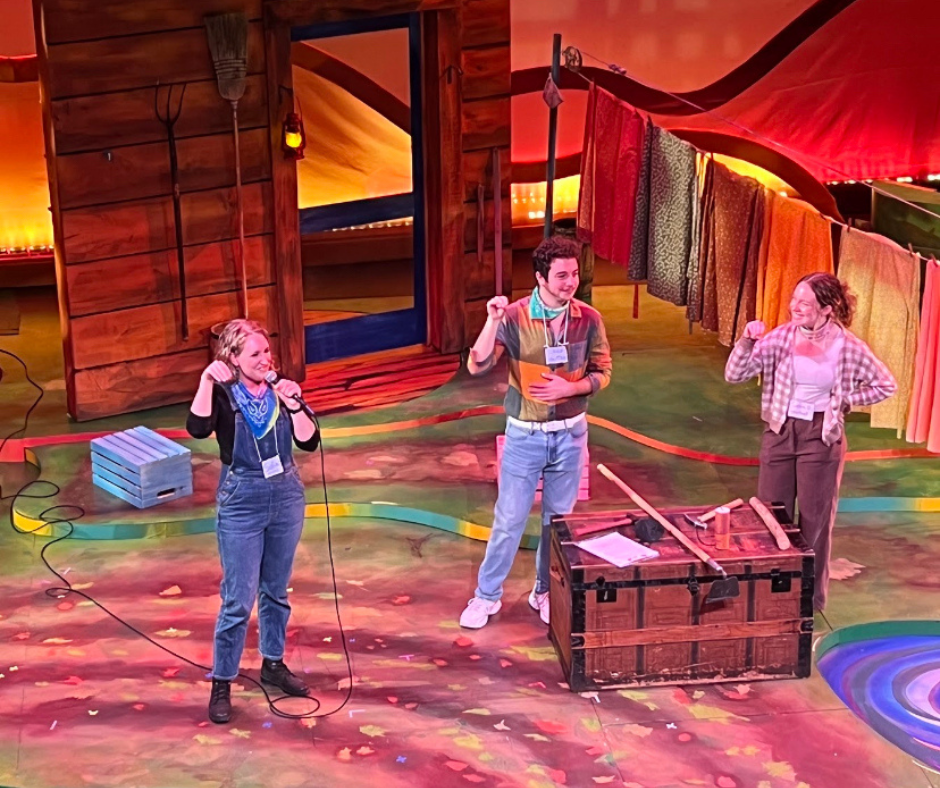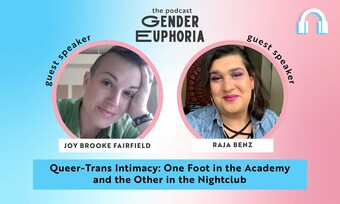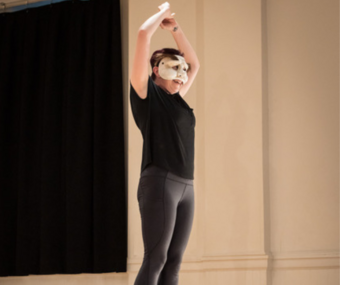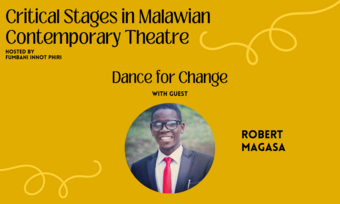Moving Forward, Best Practices
It seems like, in the world of content warnings, you’re damned if you do, damned if you don’t. So, what can educators do?
Step 1: Check an institution’s policies and resources
Educators can first check to see if their institution has guidelines or resources already in place for when and how to flag difficult content. Folks in higher education can reach out to the academic and mental health centers or check with their chair to see if there are any policies to follow. If none of those people can provide an answer, it may be time to start a conversation about what policies the program or institution will or will not adopt and how a college or high school theatre department will communicate their stance on content warnings to students.
Step 2: Ask and Individualize
Theatre educators can also simply shift their practice by asking students “Do you have any access needs I should know about?” This could happen via email by the end of the first week of class, or students could fill out a little slip of paper on the first day. Similar to asking for access needs, educators can create a survey to send to students at the beginning of the semester. (Google forms has a decent survey collection process which is easy to set up, and pulls analytics for the user.) Allow students to share any content warnings they might want and how they want to receive them (such as verbally in class, written on the syllabus, an individual email, etc.). It’s a little more work, but it allows the educator to track the responses from semester to semester and it might reveal something about the students in that program. A friend who plays Dungeons and Dragons introduced me to a handy worksheet for players, from Monte Cook Games, LLC, that could be adapted for a theatre classroom. Based on student responses, educators can open up a dialogue with individuals about how they want to proceed with any content in the course that could trigger a serious psychological response, and tailor their practice to the unique needs of the group.
Step 3: Take time to teach about content warnings
It’s not an educator’s job to be a therapist, and it would be totally unethical to provide therapeutic support to students unless the facilitator is trained to do so and doing it in a therapeutic context. That being said, educators might try drawing on psychological studies to help young people understand the nuances of accessing challenging materials. In Theatrical Intimacy Education (TIE)’s “Consent in the Acting Classroom” training, Laura Rikerd introduced me to Dr. Dan Siegel’s concept of the “Window of Tolerance.” She uses the metaphor with her acting students to help them identify the types of content that may be uncomfortable, but are still within a zone of mental and physical safety, versus work that may trigger a physiological response. A TIE mantra that may help students understand what work is safe for them is: “Theatre isn’t always going to be comfortable, but it should work within your boundaries.” Educators can also share with students that the goal of the Window of Tolerance in psychotherapy spaces is to help the patient increase their resilience around a trigger and “open” the window a little more over time. And, if conversations with students get too close to the therapist line, educators should pause and look for resources at their school, institution, or community such as a school’s mental health center or local and national hotlines. All educators should set meetings with experts and partake in training to learn how to best support students who may unexpectedly stumble past their boundaries and need support, then help direct them to the professionals who can best serve them.
We all must remember to act in good faith, listen when called in, apologize if there has been harm, and make a plan to do better.
Step 4: Be willing to be wrong
There is no one size fits all answer here. Including or not including content warnings will not erase the trauma people have experienced. In many ways, content warnings are a band-aid to larger problems that theatre educators cannot solve themselves. Even with careful planning and communication, people will mess up. Even if an educator has a keen eye toward equity, sometimes a student will carry more of a burden than they deserve. We all must remember to act in good faith, listen when called in, apologize if there has been harm, and make a plan to do better.
At the end of the day, the debate around content warnings in classrooms comes down to pedagogical ethics. Ethics are personal and contextual, so I simply can’t tell anyone what is best for them or their community. Regardless of whether someone decides to use content warnings or not, I challenge all educators to think critically about the how and why behind their decision. When an educator uses or does not use content warnings thoughtlessly, they are smuggling in assumptions about their students and how their class works instead of listening to who is in the room and what they need.
Personally, I’m not ready to totally give up on content warnings. But I do think my classroom practices will shift. I’m realizing that the content I worry most about is situated in my experience as a white, millennial, straight cis woman who does not carry trauma into most of the spaces I occupy. I don’t think that slapping a label on a play will entirely fix the problem, but I do plan to talk with students early on about theatre’s ability to question, inspire, and critique the world. I intend to ask them to consider what’s gained and who is harmed when our worldview is challenged. I will listen deeply to their responses and encourage them to do the same for each other.













Comments
The article is just the start of the conversation—we want to know what you think about this subject, too! HowlRound is a space for knowledge-sharing, and we welcome spirited, thoughtful, and on-topic dialogue. Find our full comments policy here
Dear Sophia:
Thank you for this timely article on Content Warnings. Congratulations on being the author of one of the ten most read articles in 2023, an honor we share.
Last semester I had three students leave the classroom upset and/or crying because of the domestic abuse, pedophilia, and rape, depicted in Tennessee Williams' classic, A Streetcar Named Desire. As the Script Analysis teacher, I was rather stunned by the response. The play had been on the syllabus for this class long before I started working there. (I myself had read it as an undergrad!) This was the first time I had encountered such a strong reaction to the text by students.
After checking on the students who had exited to ensure that they were OK, I resumed class with those that remained. We had had our quiz and general discussion of the work (before the exodus). Now, it was time to read aloud and discuss selected passages from the play. This is something the students enjoyed doing each week and with each new play. To my surprise, and in solidarity with their triggered classmates, the remaining students unanimously objected to the reading any passages aloud. They refused to read Tennessee Williams' work, another first for me. After class ended, a student came to me and said we need to put Content Warnings on Williams' play, and indeed, most of the plays we had read that semester because they all had been triggering in some way or other.
Learning from what had happened in the previous class, when my next period class came in, I began by asking if everyone was comfortable discussing the play. I said it was OK if anyone wasn't and that I understood, no problem. I wanted students to know they could do whatever they felt they needed to do to take care of themselves. The class was thoughtful at first and finally said, yes, they were fine with it. Two classes, two different responses, same play.
Another instance has come to my mind in the debate about Content Warnings. I remembered how, a couple years back, a student had come to me asking if she could miss class the week we would be reading A Streetcar Named Desire. She asked if I could give her a different assignment--perhaps something she could write an essay on to make up for missing class. She said that, for personal reasons, reading and discussing the play would be triggering for her. In that instance, I got permission to switch out Streetcar for another play and did.
Because there seems to be an epidemic of books being banned in our country, I would hate to see any plays removed from a Script Analysis reading list--or any reading list for that matter. We now have a hard-won mixture of classic plays (by white male playwrights) and newer works by BIPOC and women writers. To supplement this, whatever group is not represented on the syllabus, we provide a platform for in an informal play reading meet-up group that anyone in the school community can participate in. To preserve this growth, and to ensure diversity, equity, and inclusion, it seems to me that Content Warnings are the way to go.
Thank you for sharing the words of the professor who said that "students of color are often asked to carry a heavier burden in the content that's consumed in the classroom than white students". I would have liked you to unpack that statement a little bit, as I do have some students of color in my classes. I thought of myself as a young student and how that statement seems to ring true as I reflect on it as an adult.
I look forward to studying your article more, and to reading the links provided to help me sort out this important debate as a theatre educator and artist.
Great essay, Sofia. In my experience, I have observed that content warnings can become the bogeyman. If you place too much emphasis on the warning itself, it can cause participants to brace themselves for impact or even start to panic. I have found that timing is also crucial in content warnings. Offering a warning right before the content appears may work because folks don't anxiously wait for the sensitive content to appear.
Additionally, proactively establishing language and expectations around tricky content with your participants is essential (as you allude to). So long as everyone is on the same page about the protocol of the warning, I have found that content warnings are an effective tool to help set a thoughtful, respectful, and brave tone around sensitive dialogue.